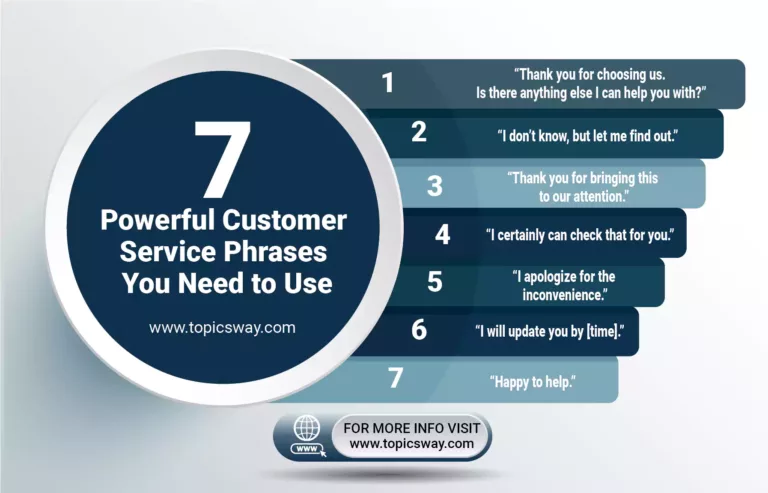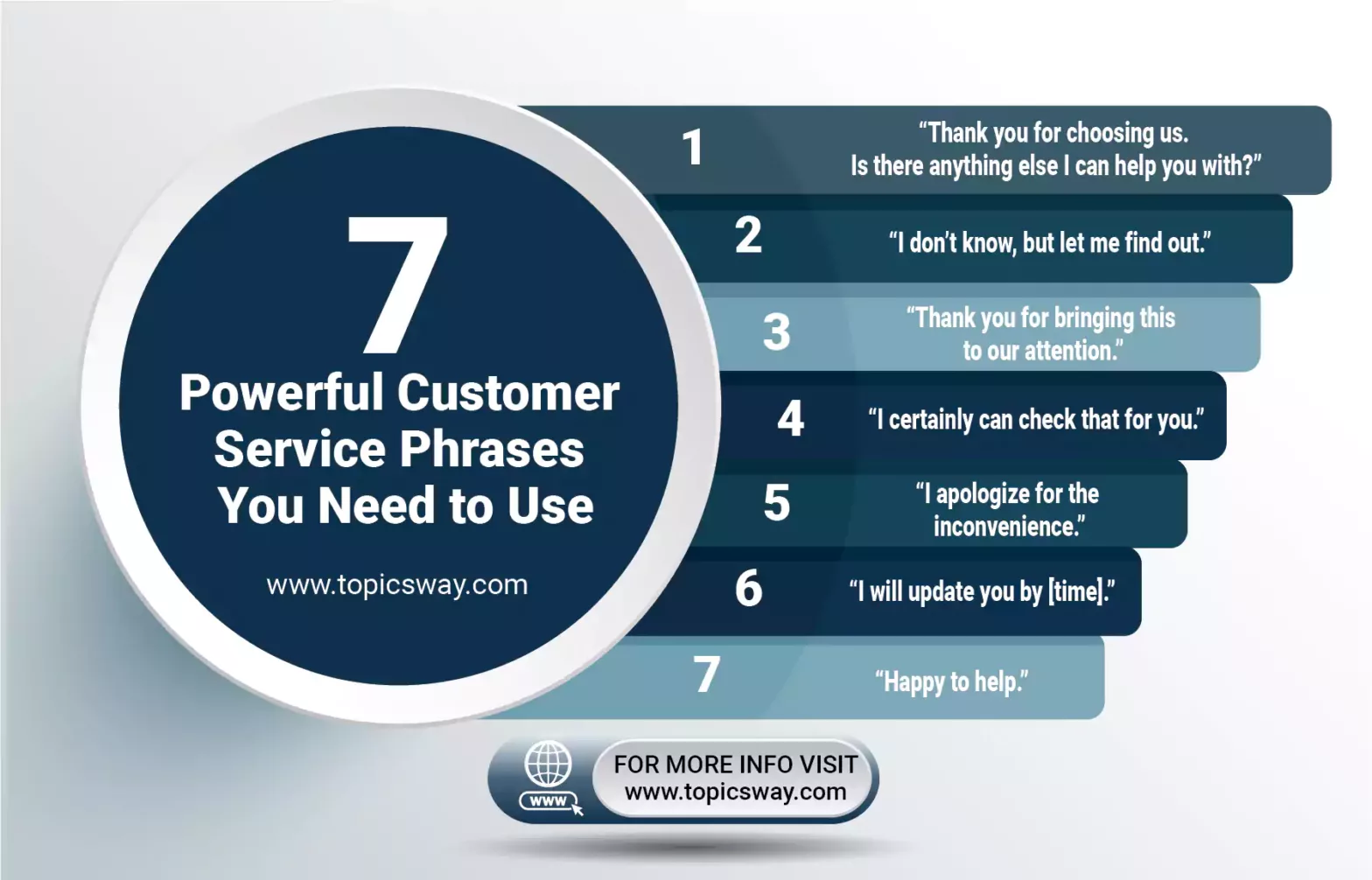Create your Blog
- Author: topics way
- April 10, 2021
- 12:04 pm
Share with your friends!
Powerful Customer Service
“Thank you for choosing us. Is there anything else I can help you with?”
We all recognize these oft-repeated phrases from customer service agents. Sometimes, they may come off as fake or mechanic, especially if we hear the exact same phrase everywhere else.
Repeatable phrases do have their function, however. They bring consistency to customer service. When you have a repertoire of helpful phrases at your disposal, it can improve your communication as a customer service professional.
The language that you use can directly affect a customer’s purchasing decision and the impression that a customer has of your company. 82% of customers left a company because they had a bad customer service experience.
Make sure that your messages are always polished before you send them. If you feel that your content could use some editing, there are tools such as Grammarly, Handmade Writing and Readable that can help you with this stage.
In most cases, customers have plenty of choices in terms of who they want do business with. Therefore, it’s critical that you know how to talk to your customers in order to satisfy their needs.
Here are 7 powerful customer service phrases that can support your interaction with customers.
“I don’t know, but let me find out.”
Simply telling a customer that you don’t know and suggesting that they contact someone else isn’t good enough. Nothing is more upsetting than having to contact different people one after another, none of whom have the answer.
Handing your customers off to other people is good way to drive them away. But if you want to provide high-quality customer service, you have to be the one who is contacting those other people and finding the answer for your customer. The point is to reduce customer effort which leads to improved customer satisfaction.
“Thank you for bringing this to our attention.”
Not all companies are happy to receive a report of a flaw in their product or service. That’s a wrong mentality. In fact, the customer who reports the flaw is doing a favor to your company by participating in your quality control. Most customers wouldn’t make the effort to notify of such errors.
The least your company can do in that situation is to show appreciation. The observant customer is most likely not looking for anything more than recognition of their effort. Being polite doesn’t really cost you a dime.
“I certainly can check that for you.”
Using positive and confident language goes a long way. Even if you’re uncertain about the outcome, it’s important that you appear encouraging and take a proactive approach to finding the solution. You want to increase your customer’s confidence in your brand. Show that you’re a professional who gets things done.
“I apologize for the inconvenience.”
If a customer is frustrated, it’s crucial to show empathy to the customer and let them know that you understand their concerns. Apologizing to an unhappy customer and acknowledging the mistake is a much better approach than giving a list of excuses. Your goal is to retain existing customers and make them into loyal brand advocates.
Sometimes mistakes can be due to circumstances beyond your company’s control. Even if you’re not the one who is responsible for the mistake, you can still be apologetic for the way your customer feels. The next step is to work on how to make things right.
“I will update you by [time].”
Some customers can be impatient and are constantly checking on the status of their request. One solution to these update requests is to keep the customer posted as often as possible. You can also promise to let the customer know when they should expect to hear from you.
Even if you cannot promise to have the customer’s request solved, you can always promise an update. In addition to keeping the customer informed about the status of their request, it provides you the opportunity to build trust. You can show that you care about your customers and want to keep them satisfied.
“Happy to help.”
Adding positive power to your words is the simplest way to make your customers feel more valuable. Positive words are easy to implement and help your customers have more positive experiences. Better experiences, in turn, help retain these customers.
Not all customers will inform you that they’re not satisfied. Either they don’t want to be a burden, or it’s simply easier not to make the effort. They will just stop using your services or buying your products.
Positive words can invite them to share further issues that may arise. It’s a better situation where customers share their problems with you instead of just abandoning your company.
“As much as I would love to help…”
There are situations where the customer’s request is not feasible. This is a polite way to say no, and it’s better not to lead your customer on if you’re certain that there will be no solution. Simply saying no, on the other hand, can be too abrupt or blunt, in particular if the customer appears sincere and has formulated the request in a polite way.
By using this phrase, you’re giving a kind but firm response. Your customer will understand that you would like to help but it isn’t possible in that situation.
We hope that you find these phrases useful in your customer service job. Perhaps you’re already using some of them, and hopefully they’re helping you provide exceptional customer service.
























